Issues- Art Projects- Critical Conversations- Lectures- Journal Press- Contact- Home-
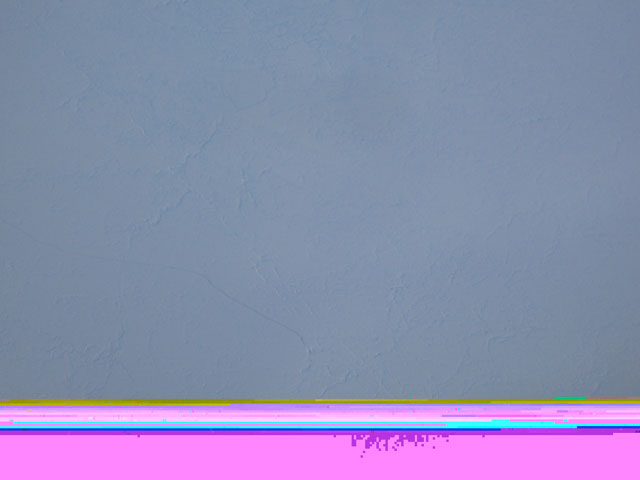
duskin drum and Sarah Lewison
Sarah Lewison, "arctic landscape (very unstable colors- they change on downloading)"
“The refuse between mind and matter is a mine of information” Robert Smithson
One of the key concepts conveyed by permacultural practice is the reimagining of that which is in-between the barriers of a human built world: roads, fences, buildings. In permaculture, borders and edges are encounter sites where translation and adaptation between species encourages diversity and resiliency.
We humans also have edges. (1) We participate in multiple encounters and translations with the edges of other bodies within context-suffused mediums called “environments.”
The seed bomb is a permacultural meme that intensifies awareness of this participation. Popularized by microbiologist and farmer Yasunobu Fukuoka (2) and the New York’s Urban Guerillas circa 1973, seed bombs, a mix of seeds and compost rolled into damp mud balls, were also used by prehistoric farmers. Because seeds are lightweight, their mix facilitates distribution and germination by providing weight and protective cover; tossed over a border or fence, the ball, grenade, or bomb waits until rain melts it into the ground. As the seeds swell and cotyledons emerge, seedlings are supported by microbes and the chemistry of root and soil. (3) An amalgam of seeds, fungi, microbe and ground becomes a manifesto for the fullness of in-between.
Here we (duskin and Sarah) attempt to draw on what we have heard about co-inhabitants outside and inside the boundary of the self to better tune ourselves toward their presence. What if the seedling does not survive? The seed bomb shares the uncertainties of all entities who depend on wind, bird, bear or other organisms to assist in reproduction. The seed bomb invites humans to get over themselves and into not-human affinities by sharing these risks, by tuning to worlds of unknowable relations. It disturbs ontologies of ownership through its occupation of spaces subjected to capitalist property regimes. In repopulating sites with robust uninvited species, it generates resistance to the biological colonization of monocultures. And throwing is thus an act of militancy that takes one beyond the boundary of self, off balance, extending, coming apart, making room to think/feel differently about death, including the death of the economy, body, home, city, nation, globe and the catastrophe of a climate changed. A seed bomb demonstrates at a distance how reciprocities of being involve changing and being changed in relation to and with non-humans.
Non-humans are tied intimately to humans. Critters germinate and are harbored within our human animal; millions of arthropods, fungi and bacteria territorializing, grooming and terraforming human-animals through vertiginous relationships with semi-permeable surfaces. (4) Like the gut bacteria governing digestion, these life forms long ago organized with other organisms to create something multiple that we call a human-self, but which is in fact only barely human. (5) We writers are also multiple: mother and son, a relation, a calving of one by another. We are entangled with each other and probably ventriloquising the ideas of those who have challenged us, and to whom we draw the reader.
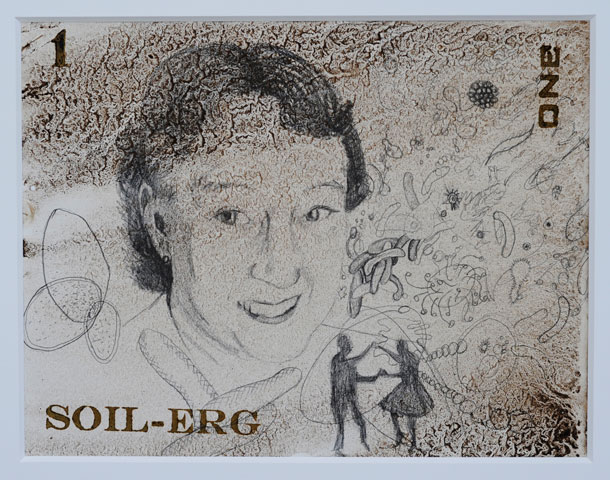
Claire Pentecost, "Lynn Margulis"
We are “walking, talking minerals,”; redistributions of “oxygen, hydrogen, nitrogen, carbon, sulfur, phosphorous, and other elements of Earth’s crust into two-legged, upright forms.” (6)
The evolutionary microbiologist Lynn Margulis demonstrated the centrality of symbiosis to the development of complex organisms. Energy-producing gut mitochondria and most cells in tissues, organs and even the brain have evolved through processes of convergence, in which larger cells enveloped and incorporated smaller invading cells, often for mutual benefit. Plants, animals, fungi and humans are literally assemblages; aggregates of single-celled organisms that coordinate mechanical, affective and neuronal activities. Even infectious cells might have been absorbed and re-tuned to work with or for their hosts. It becomes increasingly evident that bacteria have kinds of intelligence. Because bacteria dominate human-animal cell populations by a factor 10:1, one can enjoy the idea that one’s thoughts and feelings might not be one’s own. (7) Enmeshed in inter-objective relations, we co-constitute with and in a conglomeration of objects living along and inside each other that process and signal memories, histories and modalities reflecting their various material constitutions. (8) Communication among these intertwined objects drowns out anthropocentric autonomy with a cacophony (9) of transversal and non-linguistic relays circulating among the multitudes of arthropods, bacteria, plastids and other organisms that add up to be us. (10)
Pause. Breathe.
To recognize ones self as an aggregation is to open to the risks and intimacy of ecological interdependency and the edge of our only-human (in)abilities to discern the not-us within and without. To be terraformed and permacultured by others for whom you constitute a world means that, in contradistinction to being autonomous or free, you are only a stakeholder. Borellia burgdorferii is the bacterium that causes Lyme disease in humans; tracing its lifecycle offers a meditation on human as world.
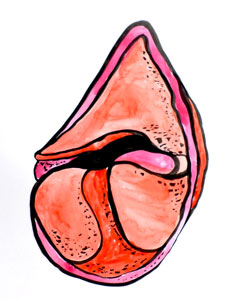
duskin drum, "Exotic fluids for everyday desires," 2013
Borellia travels through the vector of a tick that needs blood to reproduce. When a tick finds a warm-blooded creature, the spiral-shaped bacteria penetrates the skin and spins toward the viscous tissues surrounding the joints and eyes. These tissues resemble the bacteria’s own ancient mud origins. Borrelia often escapes detection by medical tests because it customizes its genetic markers to match antibodies of its host: dog, mouse, deer or human. The bacterium translates its genetic code to vanish within, a morphological transformation like improvisational concrete poetry- an act of creativity. People infected with Lyme experience pain, fatigue, eyesight and joint degeneration and the mental unease of not “feeling” oneself. The invasive infectiousness of Borellia is not so different from how human oil burning, (coal, gas) leads to the corrosion of glaciers, which soften until their undersides collapse. Lyme carriers do however experience remissions from the dis-ease. We might dream an evolutionary symbiotic merger in-process between cells (in the) human, and an invader Borellia co-evolving with an (in)human aggregation. Maybe there are “green” Borellia that strive to reduce the harm they cause their host, to be sensitive. Cultivating sense-ability (11) is to become a comrade in vulnerability with co-evals.
In ‘Testimony of a Spore,’ anthropologist Anna Tsing employs Marilyn Strathern’s method of critical cultural comparison in narrating the lifeworld of a dessicated spore that floats freely until a downdraft blows it into another mushroom. (12) Tsing mobilizes an anthropomorphized sense-ability to convey the spore’s experience of space and time. She describes a journey full of encounters- with air as force, direction, clarity and aridity, with the edges of unreceptive bodies and ultimately, consummation in a reproductive fungal mass. Tsing’s speculative storytelling offers portraits of organisms as transforming conglomerates by pointing out common material patterns. These include principles from physics, like mobility, mass, and resistance, chemical and semiotic signaling, and biological imperatives like nutrition and reproduction. We are interested in these registers of sense-ability for the way they expose the risks of provisional commensality, provoking a partial-human sensibility of a non-human media for non-humans. (13) This essay is a seed bomb that disseminates objects so they move around and into the edges of each other, sometimes invisibly, sometimes forming alliances.
There is a need for aesthetic perspectives and practices that imagine entities as elemental assemblages, and that especially disable human expectations of agency and agentic freedom. Response-ability is a speculative ethico-aesthetic that draws a different outline around the boundary of the self to let in the materialities and worldings of other interobjects. (14) Response-ability could counter the one-directional neuro-infection of modernity that has destroyed the capacity to perceive non-human rhetorics. (15) Why not inquire whether our “human” is riddled with pathogenic invasives that generate perversely destructive behaviors of marking, mining, burning and accumulation. How could another sense-ability make the edges of others, and the accumulating damages caused by carbon overloads more voluble to humans, more insistent?
Consider the glacier, which has permacultured most of the Northern Hemisphere, communicating about and with weather and climate. Glaciers archive air samples from every season of their frozen lives in laminated ice layers, literal memory banks of spores, pollen, castings, bacteria, protists, seeds, mud, gravel, and minerals, an assembly of time. The Tlingit and Athapaskan lawgivers have long recognized that glaciers do not like people speaking about them disrespectfully. Within oral-historical records, frying with grease on or near glaciers has provoked them to surge down valleys and fjords, wiping out entire villages. (16) Climate scientists find that burning forest and fossil fuels causes glaciers and snowfields to melt (17) through the albedo effect. Empirical science looks for evidence in photographs and ice cores to make climate change sensible to human people, reinscribing human glacier relations as if they occupied two different categories of life, as if the glacier was marked and excoriated, but the human wasn’t. A melting glacier is a seed bomb that stirs up the edges and unknowable relations of the organismic multitudes. An ethico-aesthetic of response-ability attends to unknowability, acknowledging fields of vulnerability that are tied to the invisibility of other beings’ intelligence and experience. Perhaps the glacier has a mind who increases the rhetorical force of its geological form of communication as sea levels rise, just as a seed bomb draws attention to the inhuman registers of being. (18)
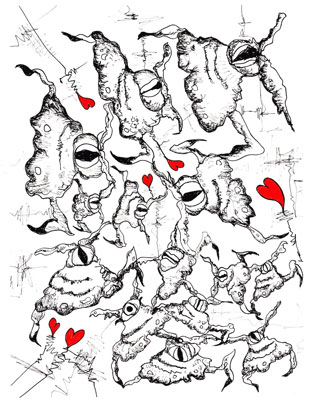
Janet Silk, from series, "Is there love in the telematic embrace?" 2013
Endnotes
1. For an interesting account of the enactment of this boundary engaging with Lacan’s conception of the mirror stage see, Lynn Margulis, Slanted Truths: Essays on Gaia, Symbiosis, and Evolution (New York: Copernicus, 1997), 59. For an another kind of account of blurred body boundaries and realities see the work of Annemarie Mol. Georg Forster Lecture 2013 - Annemarie Mol, 2013, http://www.youtube.com/watch?v=B09oi0Gyw08&feature=youtube_gdata_player. Also:
Donna J Haraway, When Species Meet (Minneapolis; London: University of Minnesota Press, 2008).
2. Masanobu Fukuoka, One straw revolution (New York; London: New York Review?; Frances Lincoln [distributor], 2009). For a video of Fukouka making seed balls http://www.youtube.com/watch?v=ptIttqU1H8Y
3. Soil here is engendered and in conversation with Claire Pentecost, “Notes from Underground,” Scapegoat Journal no. 04 (2013): 277–280.
4. Donna J Haraway, When Species Meet (Minneapolis; London: University of Minnesota Press, 2008), 3; Jane Bennett, Vibrant Matter: A Political Ecology of Things (Durham: Duke University Press, 2010); Margulis, Slanted Truths; Timothy Morton, The Ecological Thought (Harvard University Press, 2010).
5. Scott F. Gilbert, Jan Sapp, and Alfred I. Tauber, “A Symbiotic View of Life: We Have Never Been Individuals,” The Quarterly Review of Biology 87, no. 4 (December 2012): 325–341; Anna Tsing, “Unruly Edges: Mushrooms as Companion,” Environmental Humanities 1 (2012): 141–54; Donna Haraway, Playing Cat’s Cradle with Companion Species, The Welleck Lectures, Lecture (Critical Theory Institute, UC Irvine, 2011), http://people.ucsc.edu/~haraway/.
6. Russian scientist Vladimir Ivanovich Vernadsky, quoted in Lynn Margulis and Dorion Sagan, What is Life? (Berkeley: University of California Press, 1995), 49. Cited by Bennett, Earthling, Now and forever? in Ellsworth and Kruse, “Making the Geologic Now” (Brooklyn: Punctum), 2012, p. 244
7. Recent research confirms neuronal connectivity between gut and brain.
8. Timothy Morton, Realist Magic. Objects, Ontology, Causality. Open Humanities Press, (Ann Arbor: University of Michigan Library, 2013), 141. Morton uses perceptual reciprocity interobjective space- say optical illusionism.
9. Our use of cacophony is distinct, but diffractively in-formed by, from other recent uses in critical theory. Jodi Byrd, The Transit of Empire, First Peoples: New Directions in Indigenous Studies (Minneapolis London: University of Minnesota Press, 2011), 18; Jasbir K Puar, Terrorist Assemblages: Homonationalism in Queer Times (Durham: Duke University Press, 2007).
10. Biosemiotics, an emerging field, can be thought to trace the signs that life uses to communicate itself. See Jesper Hoffmeyer, “A biosemiotic approach to the question of meaning”[Zygon, vol. 45, no. 2 (June 2010)]; “MicroCorrespondence- Do bacteria sing?” in Molecular Microbiology (1997) 24(4), 879–883, and the work of Bonnie Bassler on bacterial crowd density-sensing.
11. Our sense-ability is riffing with “response-ability” in Haraway, When Species Meet.
12. Anna Tsing, “Testimony of a Spore, Or, Strathern beyond the Human Fence” (Matsutake Worlds Research Group, 2013).
13. Marilyn Strathern, Partial Connections (Walnut Creek, CA: AltaMira Press, 2004).
14. Haraway, When Species Meet; Donna Haraway, “Sowing Worlds: A Seed Bag for Terraforming with Earth Others,” in Beyond the Cyborg: Adventures with Donna Haraway (New York: Columbia University Press, 2013).
15. Richard Dawkins and D. C Dennett, The Extended Phenotype: The Long Reach of the Gene (Oxford; New York: Oxford University Press, 1999).
16. Julie Cruikshank, Do Glaciers Listen?: Local Knowledge, Colonial Encounters, and Social Imagination (Vancouver: Seattle: UBC Press?; University of Washington Press, 2005).
17. IPCC, 2013: Summary for Policymakers. In: Climate Change 2013: The Physical Science Basis. Contribution of Working Group I to the Fifth Assessment Report of the Intergovernmental Panel on Climate Change [Stocker, T.F., D. Qin, G.-K. Plattner, M. Tignor, S. K. Allen, J. Boschung, A. Nauels, Y. Xia, V. Bex and P.M. Midgley (eds.)]. Cambridge University Press, Cambridge, United Kingdom and New York, NY, USA.
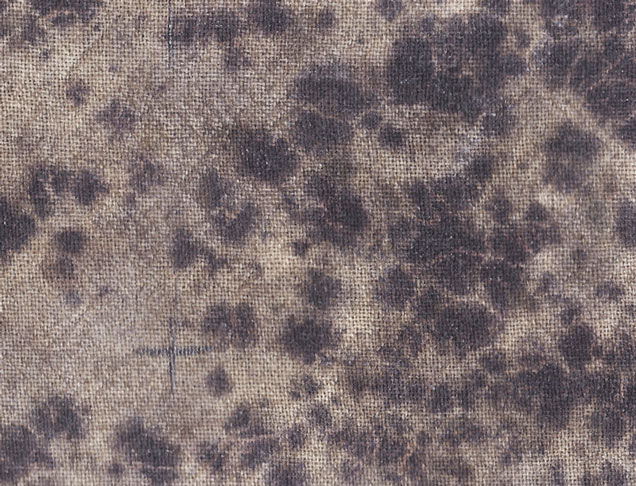
J. Morgan Puett, "MoMA Mold" Courtesy of Mildred's Lane, 2012